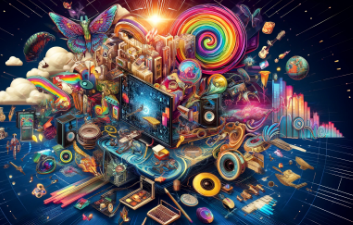Unlocking the Future of Non-Fungible Tokens: Essential Trends in Shaping the Digital Landscape
Living NFTs are taking on a life all their own within the growing world of digital assets and online culture, both integral in commerce. Anyone knowing current trends within this fast-changing world can understand how best to position for the emerging opportunities. With almost daily new developments, investment strategies, coupled with marketplace dynamics, change; thus, people and businesses should understand how to move with the times.
The NFT landscape is changing at breakneck speed, and some trends stand out as being game-changing. From innovative projects that reshape the notion of ownership to the rise of NFT marketplaces for improved user experience, the future indeed looks bright with possibilities. Those who delve deep into these trends will find much insight that would go a long way in guiding them in this heady environment.
Understanding the next wave of NFTs means understanding the potential across a wide variety of industries. By showing the trends at play, readers should be better positioned to navigate this complex market and position themselves for success.
Key Takeaways
- NFTs are shifting how people consider and trade digital ownership.
- Emerging marketplaces are making it easier and more user-friendly to buy and sell.
- It is crucially important to be in the know about emerging trends in order to make the smart investment choices.
Evolution of NFTs
They’re a far cry from how they were when launched, and they’ve moved from simple digital collectibles to real-world applications. This change in function reveals that even how people are viewing and applying NFTs within different industries is evolving.
Collectibles to Utility
NFTs originally came into being in large part as digital art and collectibles appealing to fans and collectors alike. Examples include pieces of digital art that have sold for millions of dollars, often highlighting the work of specific artists.
Over time, NFTs have grown beyond art into serving utility purposes in other aspects, such as providing owners with access to events, memberships, and virtual real estate. Some brands build loyalty programs based on rewards by giving customers unique tokens that are coupled with special perks.
In summary, this added value is drawing in more users and further integrating NFTs into daily life. Broadening functionalities mean the interest in the market from various sectors will most probably continue to rise.
DeFi Integration
With the growth of DeFi platforms, new avenues have been opening up for NFTs. They can be used as collateral for loans-a unique way to leverage digital assets.
Projects are emerging that allow NFTs either to be traded or staked in return for rewards. This type of integration enhances liquidity and further gives NFTs financial functions beyond mere ownership.
Moreover, DeFi allows the interaction with non-fungible tokens between individuals. While NFTs become part of extended financial systems, they are likely to reconsider exactly what humans perceive as asset ownership in the digital world.
Trends Coming in the NFT Marketplaces
The NFT marketplaces welcome both the challenges and the opportunities thrown up by them. Indeed, a few key trends have altered the way users would interact with digital assets. Two of the important areas include sustainable minting of NFTs and interoperability between different platforms.
Sustainable Minting
Sustainability is now concentrated on in the NFT space. More and more creators, as well as marketplaces, use more environmentally friendly ways to reduce the impact minting has on the environment.
Green Blockchain Technology Adoption: Moves by some marketplaces into blockchains using less energy, such as the Proof of Stake networks.
Carbon Offsetting: Some platforms invest in projects for carbon offsetting to balance out the emission.
These practices help in the attraction of environmentally conscious users and build a good brand image.
Interoperability Across Platforms
The much-needed success ingredient for NFTs at this time is interoperability. The users want ease; that is, they want the ability of different platforms to work together with their assets.
Cross-platform Trading: Some marketplaces allow their users to sell on multiple sites. It increases visibility by giving them access to an enormous audience. The user decides where he could get the best deal.
Standardized Protocols: New standards such as ERC-721 and ERC-1155 are easing the ability of moving NFTs between platforms.
This further enriches the experience of the users and stimulates their engagement in the NFT ecosystem. Such are the trends that keep altering the landscape around NFT marketplaces.

Also Read :
- Top 5 Cryptocurrencies to Watch in 2024
- From AI to Blockchain: Navigating the Frontiers of Technology Trends
- How Renewable Energy Technology is Gaining Ground in South Africa
- The Future of Technology: South Africa’s Top Innovations
- Blockchain Technology: Understanding Its Impact Beyond Cryptocurrencies